1. 1960 version, from the book Israel Resurgent, pp. 206-207: text
Another peculiar religious minority with a community in Israel
is the Druze population. Their main centre is in Syria. The
Israeli section live in the northern district, and are mostly tillers
of the soil. They are sturdy and warlike, and in the War of Independence
they fought on the side of Israel. Though Arabic-speaking,
they had never been on happy terms with the Moslem
Arabs, and lived apart. Their sect is derived from ancient races in
the Middle East, and they have held fast, for a thousand years, to
esoteric doctrines, which are believed to be a mixture of Semitic
and Persian paganism, Islam and Christianity. According to their
doctrines they are 'in the period of concealment', and may not
divulge anything about their faith. They have lay and spiritual
leaders, but no priests. The Ministry issues in three languages a
separate bulletin on Druze Affairs in Israel, most of the articles
being written by heads of the community.
A smaller sect, of Persian origin, but having its religious and
spiritual centre in Palestine for more than half a century, is of the
Bahais or Babis. They were formed during the nineteenth century
in Persia, where a religious reformer claimed to be the forerunner
of the Moslem Messiah, and assumed the title of Bab, or the Gate,
because he was the Gate to the New Era. One of his Persian disciples
preached a universal religious teaching in Persia, and when
exiled from that country, took refuge in Turkey. The Turkish
Sultan, Abdul Hamid, alarmed at the spread of the new creed,
imprisoned him in the fortress of Acre, but after some years he was
released, and made his home first in that town and later in Haifa.
Baha-Ullah continued to preach human brotherhood, and his son
Abbas, who succeeded him, spread his doctrine also in America.
Father and son are buried in a beautiful garden above Haifa on the
Carmel Mountain, which has become a place of pilgrimage for the
members of the world community. A shrine with a gold cupola,
and a hall of archives in the style of a classical Greek Temple,
have been built in recent years, and are striking landmarks of
Haifa's expansion on the Carmel slopes. The head of the community
at the establishment of the State was Shoghi Effendi, the
grandson of Sir Abbas. He died in 1956, and no member of the
Persian family has taken his place. The direction of the world
community is now shared by an international Spiritual Board with
its seat at Haifa.
2. 1952 version, from the book Israel, pp. 183-184: text
Another religious minority with a considerable community
in Israel is the Druze population of some 15,000. They live
entirely in the northern district, and they are mostly tillers
of the soil. They are sturdy and warlike, and in the War of
Independence they fought with Israel. Though Arabic-speaking,
they have never been on happy terms with the
Moslem Arabs and lived apart. Their sect is derived from
many ancient races in the Middle East, and they have held
fast, for a thousand years, to esoteric doctrines, which are
believed to be a mixture of Semitic and Persian paganism,
Islam and Christianity. According to one of these doctrines
they are 'in the period of concealment', and may not divulge
anything about their faith. They live happily today with the
Jewish settlers, and in the last election to the Assembly of
Israel they returned two members.
A much smaller sect, which has also a Persian origin, but
has had its religious and spiritual centre in Palestine for
more than half a century, is the Bahais or Babis. They were
formed during the nineteenth century in Persia, where a
religious reformer claimed to be the forerunner of the Moslem
Messiah and assumed the title of Bab, or the Gate, because
he was the Gate to the New Era. One of his Persian disciples
preached a universal religious teaching in Persia, and when
exiled from that country, took refuge in Turkey. The Turkish
Sultan, alarmed at the spread of the new creed, imprisoned
him in the fortress at Acre, but after some years he was
released and made his home first in that town and later in
Haifa. Baha-Ullah continued to preach human brotherhood,
and his son Abbas, who succeeded him, spread his doctrine
also in America. Father and son are buried in a beautiful
garden above Haifa on the Carmel Mountain, which has
become a place of pilgrimage for the members of the world
community. The present head of the Bahais, Shoghi Effendi,
who is a grandson of Abbas, and was educated at Oxford,
continues to live at Haifa, and round his house a small
Bahai enclave, inhabited largely by Persians, remained undisturbed
in the period of the troubles. Some of the members
of the community who were sympathetic to the Arab cause
took flight to the Lebanon, but most remained in Israel, and
so far as their influence goes, are a factor making for interreligious
understanding.
3. 1960 version, from the book Israel Resurgent, pp. 206-207: image scans
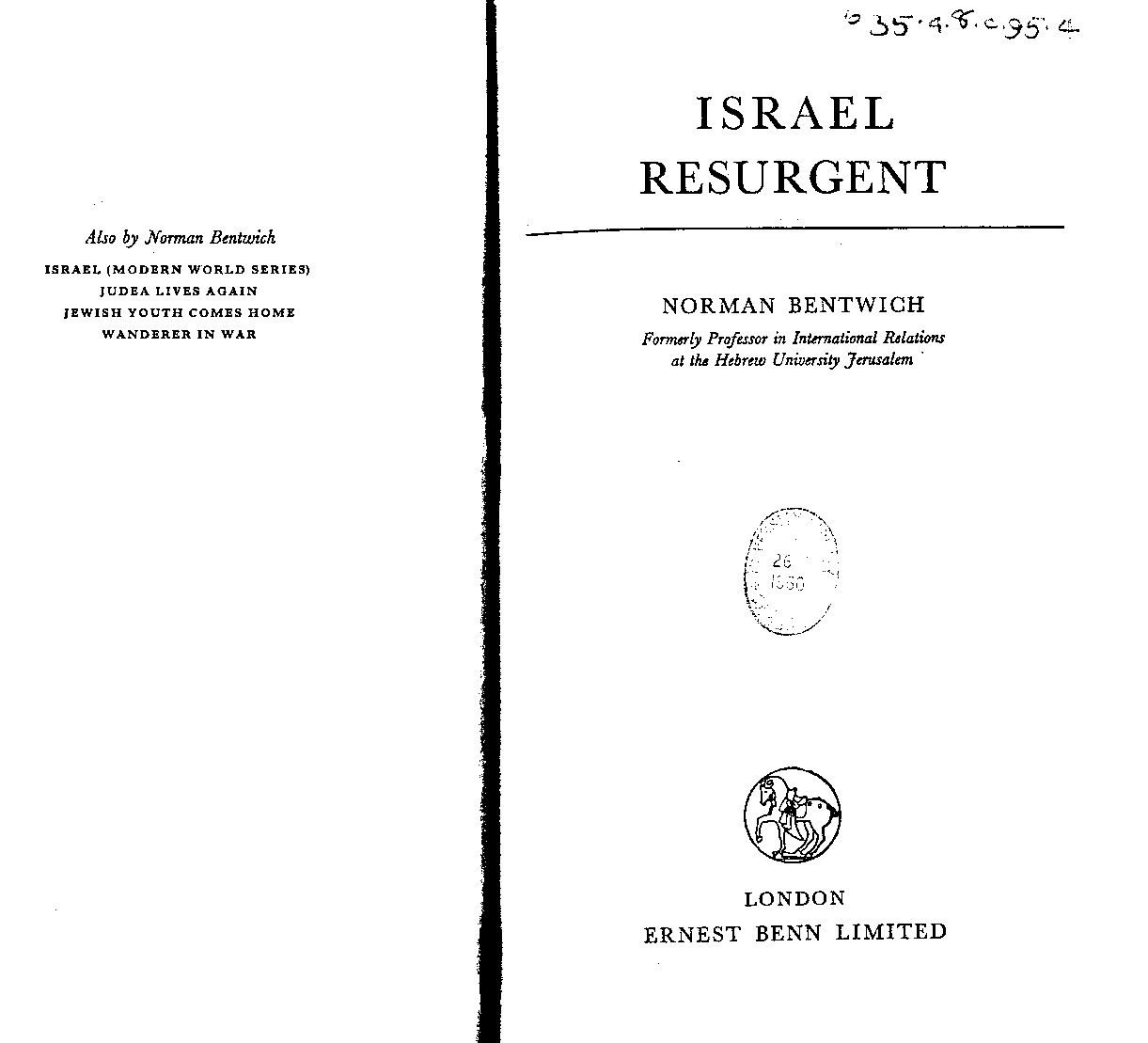


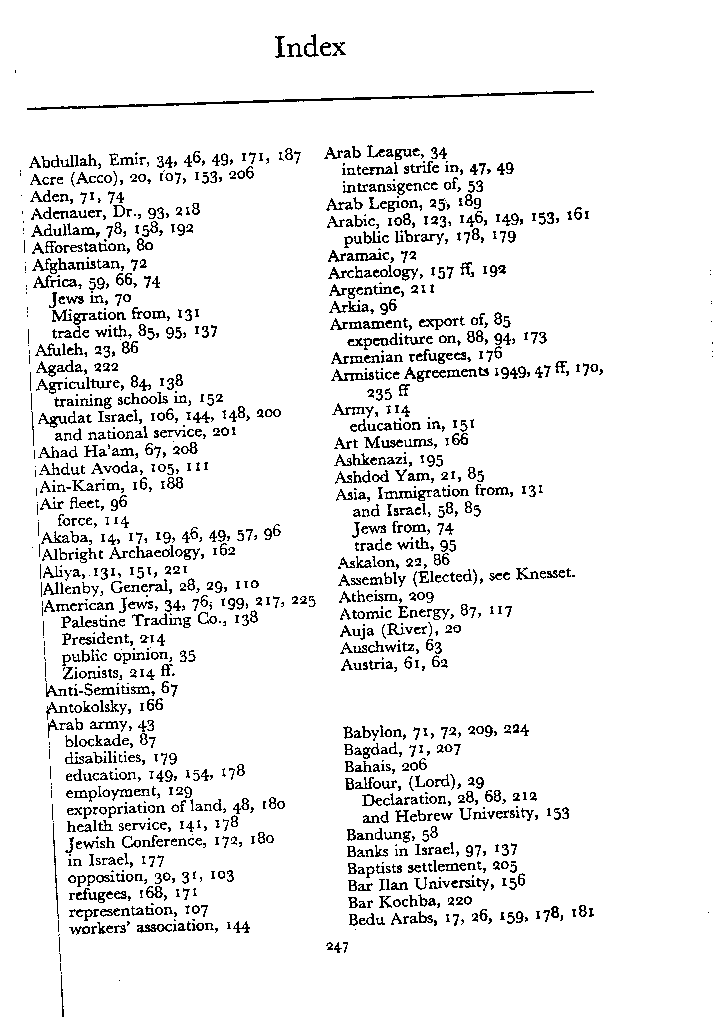
4. 1952 version, from the book Israel, pp. 183-184: image scans
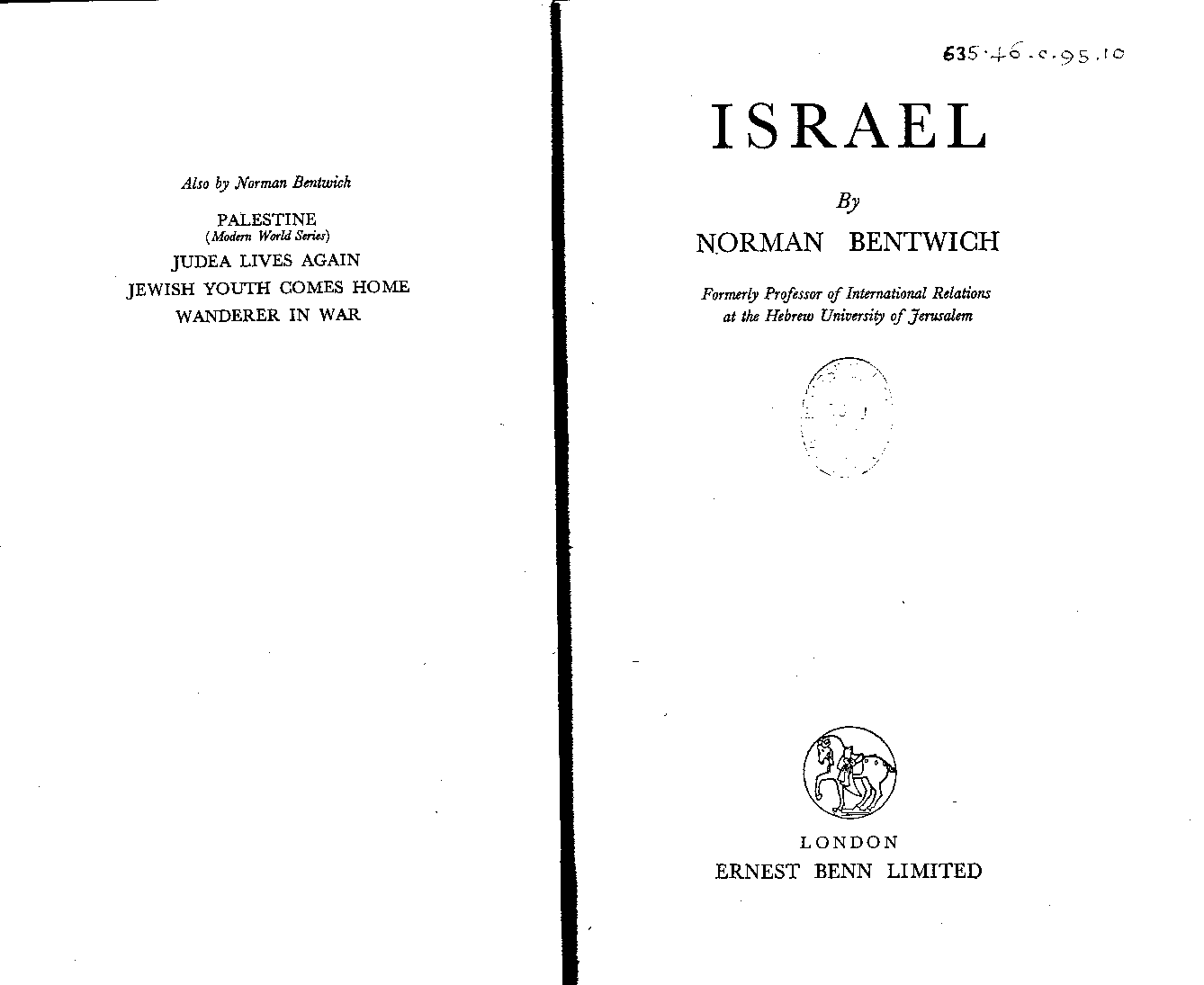


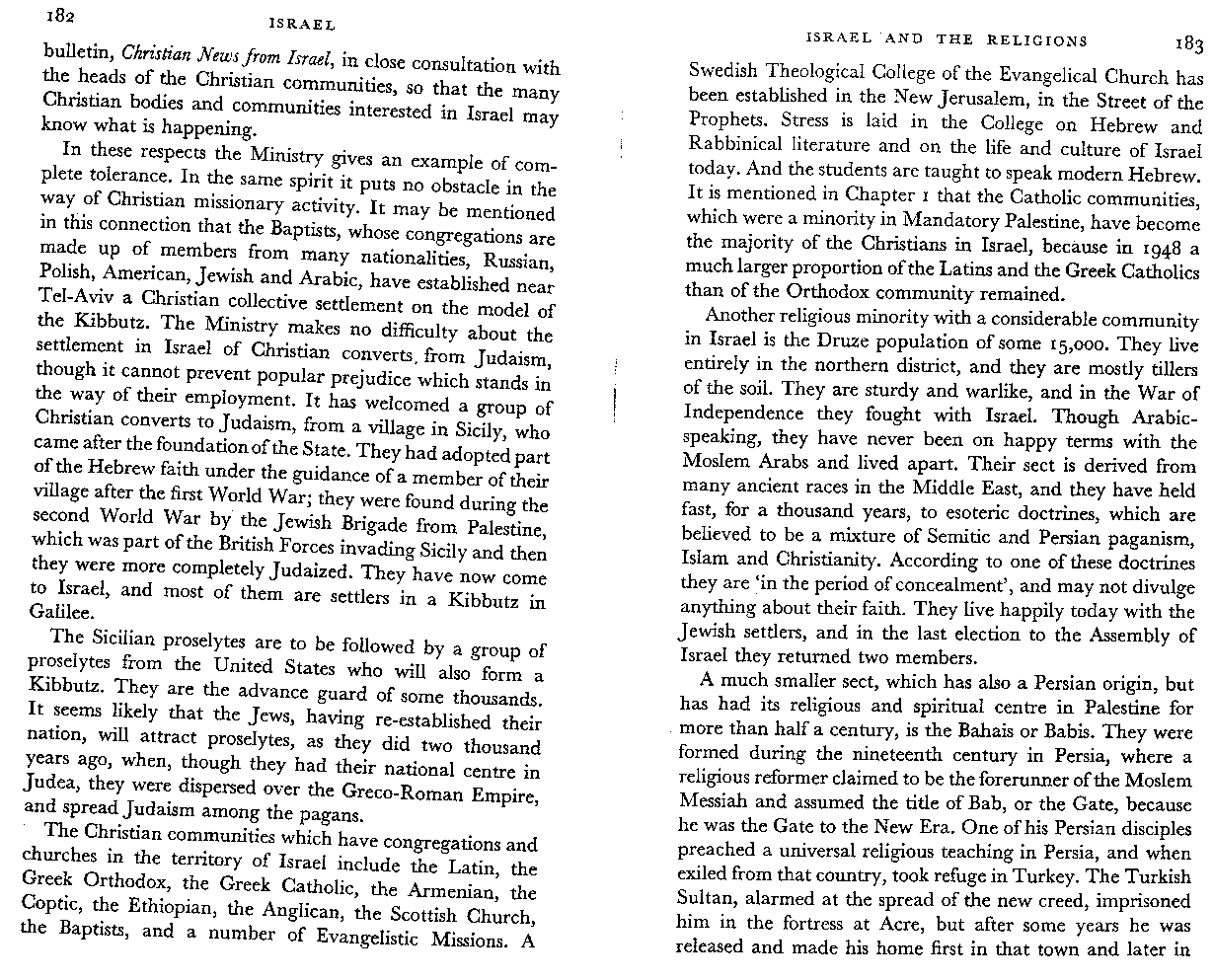
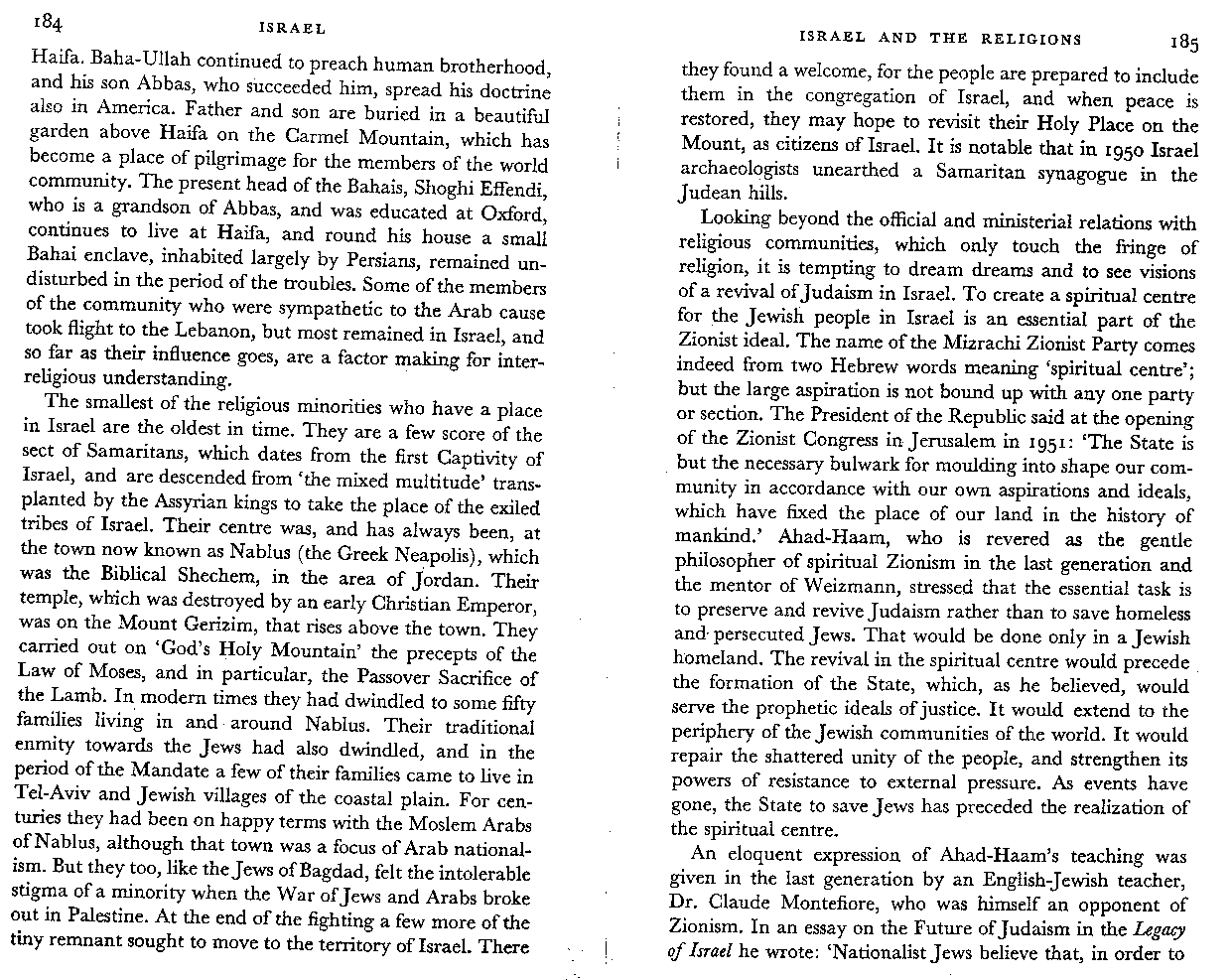

|
